When Amy Bucher, St. Baldrick’s board member and mom to Honored Kid Arden, first saw our new brand awareness campaign celebrating happy, healthy childhoods, she wasn’t a fan. But now, two weeks before her second shave with St. Baldrick’s, she shares how she came to embrace it — and why supporting childhood cancer research is more important now than ever.
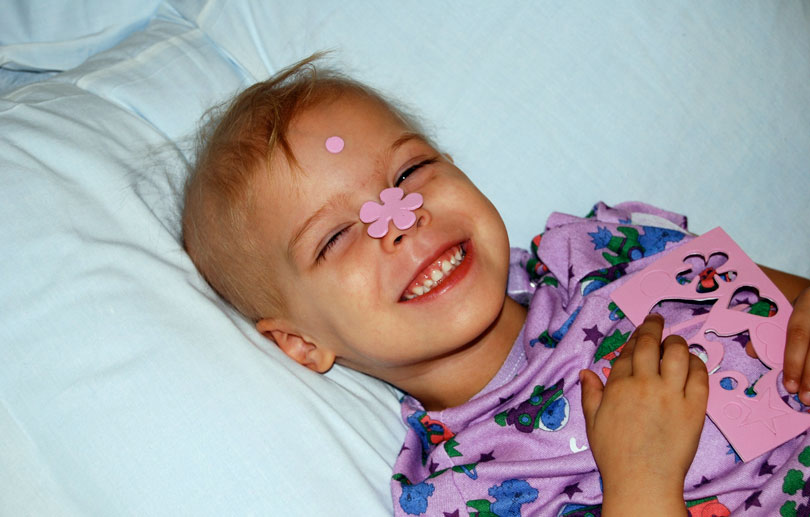
Arden acting silly during her chemo treatment in 2007.
“Um… Can I be completely honest with you?”
I had a strong emotional reaction to the St. Baldrick’s Foundation’s new brand awareness campaign when I first saw it at our June board meeting last year.
A sweet baby laughing as her daddy tears a piece of paper. A toddler playing in the rain, gleefully stomping on puddles. Kids smiling; blissful, innocent scenes representing typical childhood memories.
Brothers getting caught having painted their faces, pointing fingers at each other as Dad tries to stop laughing while trying to find out who did it. Kids flapping arms to make flatulent noises, one trying to outdo the other. More precocious moments, to be sure, but still, typical childhood experiences.
It wasn’t what I was expecting.
My response was visceral. Rather than smiles or giggles, these scenes in the context of our childhood cancer mission evoked my grief, my anger.
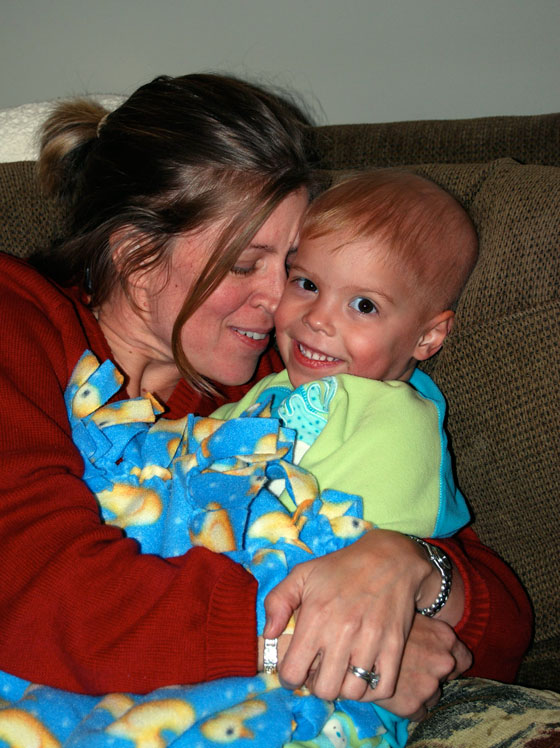
Amy and Arden share a hug.
This is not the world my daughter knew once she was diagnosed with neuroblastoma a month before her third birthday. This was not her experience for a third of her life. What were they thinking?
These are the images that can haunt those of us who know the current reality of what kids endure while being treated for the many diseases under the umbrella term “childhood cancer.” The scenes that replay in my head are very different, and along with many other things, I mourn the fact that Arden’s brief time on earth was interrupted, and the final third of her life was profoundly different from a typical kid’s.
Alongside the wonderful, innocent memories we cherish are other, profoundly heartbreaking ones.
Arden’s solemn face as she gazed out of her hospital room window, painted with rainbows, at the playground she couldn’t walk outside to enjoy because her immune system was too weak. Her smiling and giggling at her daddy’s silly jokes and songs while she was tethered to an IV pole, trying not to scratch at the mysterious full-body rash caused by one of the medications from her first cycle of chemotherapy.
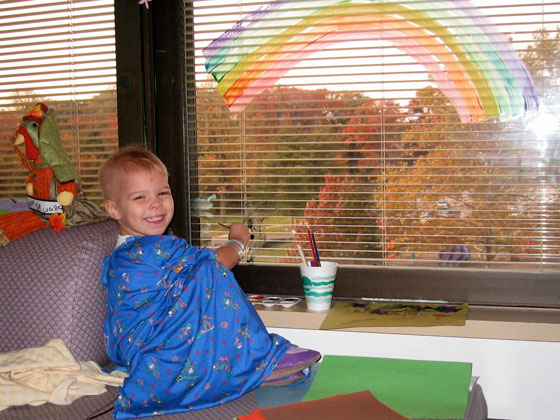
Arden paints by her hospital room window.
Her willingness to get up out of bed while still bloated with fluids, still healing from mouth sores, still battling nausea, to enjoy some time splattering paint on a piece of paper, making unique designs with pink, teal, purple, yellow — the brightest colors she could use — to momentarily emancipate her, at least in spirit, from her isolation in the small room she inhabited for weeks on the Bone Marrow Transplant Unit.
We rejoiced when she would let the music and art therapists in for play. It wasn’t every day she could do it. Yes, our child played in the rain. Her puddles were unfathomable to you and me.
Many of us parents worked (and continue to work) very hard to communicate this reality: that this experience is not what the commercials we had seen with smiling, adorable bald kids portray. And yet, seven and a half years since she died, I now understand our experience and pain are likely unfathomable to most who haven’t traveled the same journey.
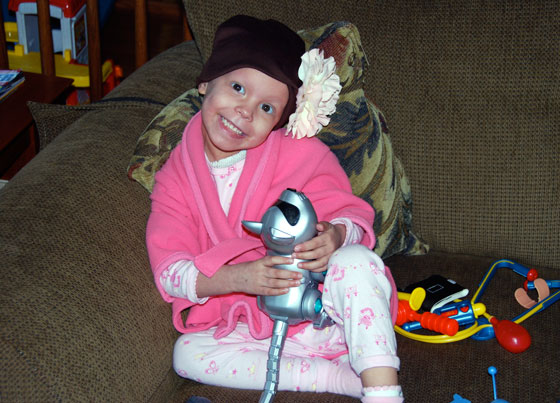
Arden playing with a pet that Amy could keep germ-free.
What I know now is that people who care about kids don’t want them to suffer the way my child did. They don’t want parents to see their kids figure out how to play through the pain of childhood cancer treatments, often with combinations of chemotherapy drugs developed in the 1950s and 1960s upon which we rely today. They don’t want so many young childhood cancer survivors to face as adults the increased risks of known late effects of these drugs, which are too often chronic, debilitating, and life-threatening.
They envision — in the way the St. Baldrick’s Foundation’s shavees℠, VEOs, donors, and volunteers do — a future in which kids can just be kids. Dare I say we imagine a future without childhood cancer as we know it today.
I didn’t hold back my concerns in front of the team that worked so hard to create this multimodal marketing masterpiece during that June meeting. I am grateful to everyone in the room for listening to, and not dismissing, my point of view. As it turns out, another board member, also a bereaved parent, had a very different perspective on the campaign — he loved it right off the bat.
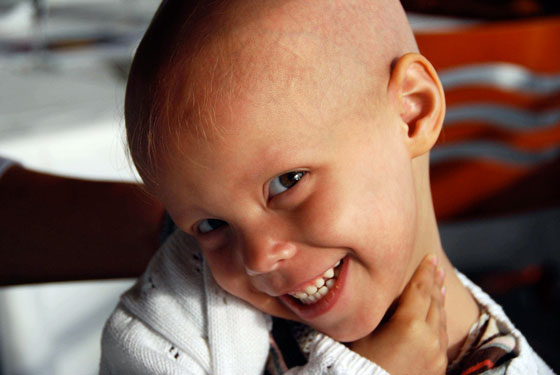
“What I know now is that people who care about kids don’t want them to suffer the way my child did,” Amy said.
What we all agreed upon is that we hope to reach a larger audience of people who have not walked in our shoes, but who want to help kids diagnosed with cancer. We need to continue to build greater support in order to fund more innovative research in order to fulfill our mission.
So, I have chosen to put aside the darker emotions associated with my grief and pain to focus on a more positive future for the next generation. By investing in the most promising childhood cancer research wherever it takes place, in collaboration, in breaking down silos and carving new avenues for progress, we can make it happen together.
Can I be honest with you? Thank you so much for the love and dedication the St. Baldrick’s and broader childhood cancer community shows in honor, in memory, and in defense of all kids, who are, indeed, special.
Kids are special, so let’s treat them that way. Donate on Amy’s shavee page and help fund cancer research just for kids.
Read more on the St. Baldrick’s blog:

 SBF
Tweets »
SBF
Tweets »